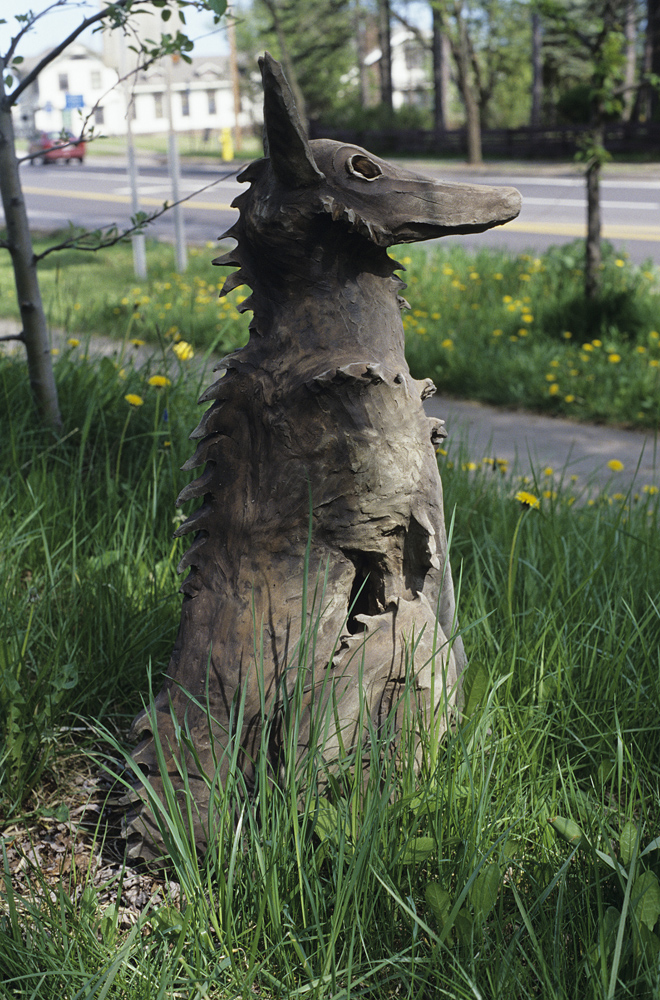
This lifesize stoneware dog was made during a Jerome Foundation residency at St. Johns Pottery with Richard Bresnahan. It is woodfired stoneware and has gone through several summers and winters outdoors. It refers to the long traditional of guardian animals at gateways. I have made others like it--it is an ongoing series.
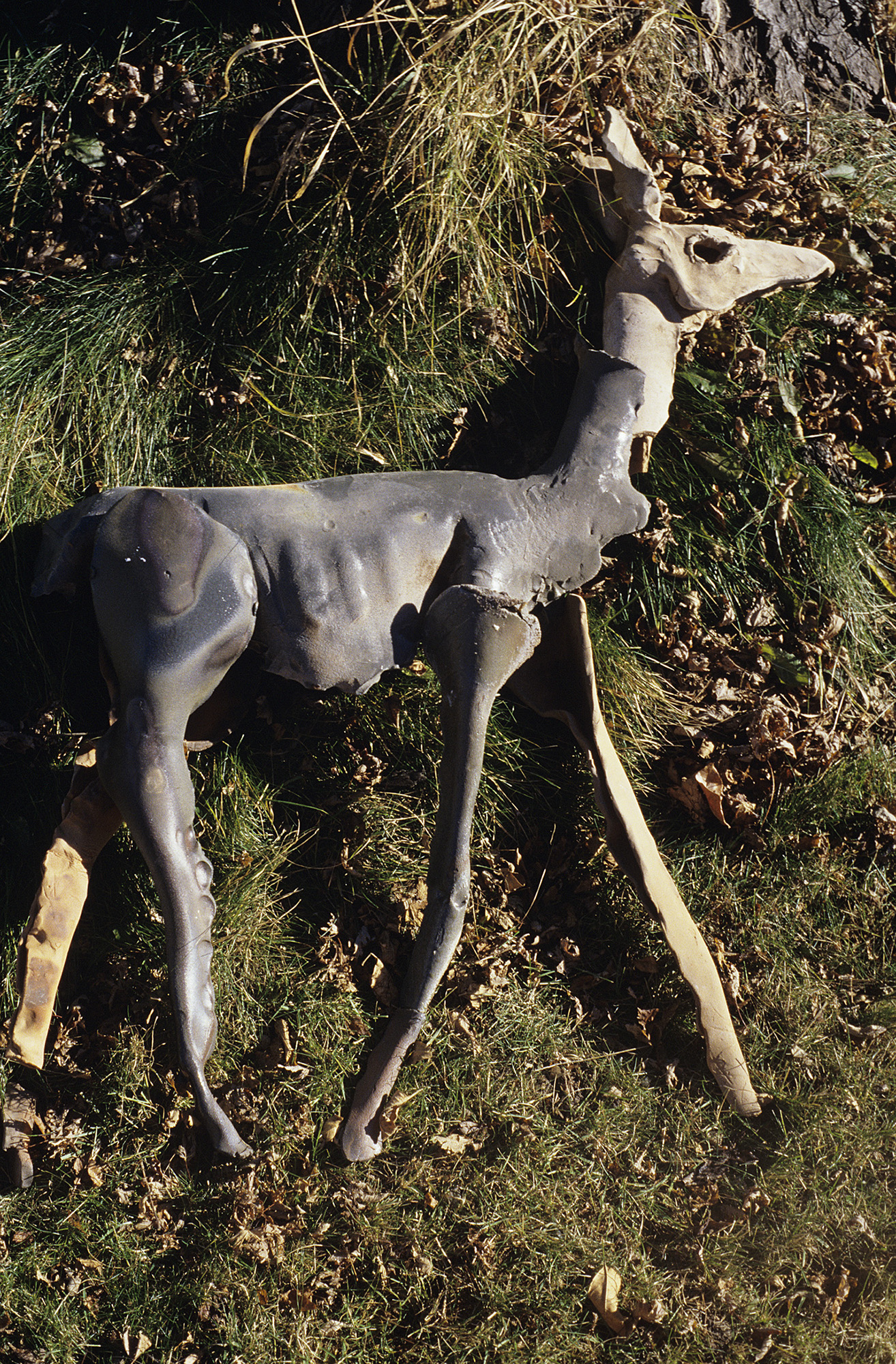
This lifesize stoneware deer was also made during my Jerome residency. It was in the Minnesota Museum of Art 3D Biennial.
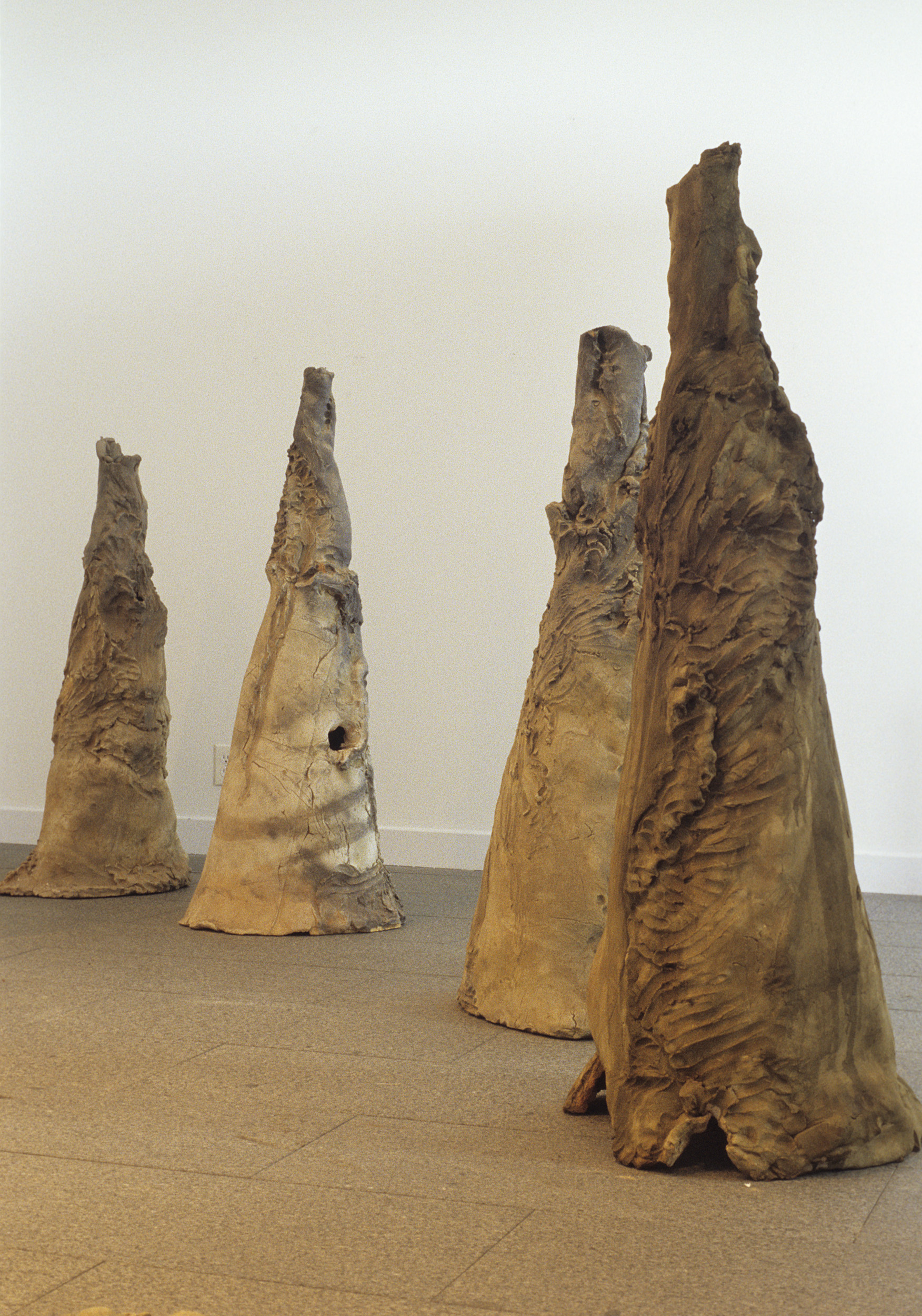
These stoneware slab-built works are 5' tall; there is a fifth one as well. They are shown as a group, whose immediate inspiration was Rodin's Burghers of Calais.
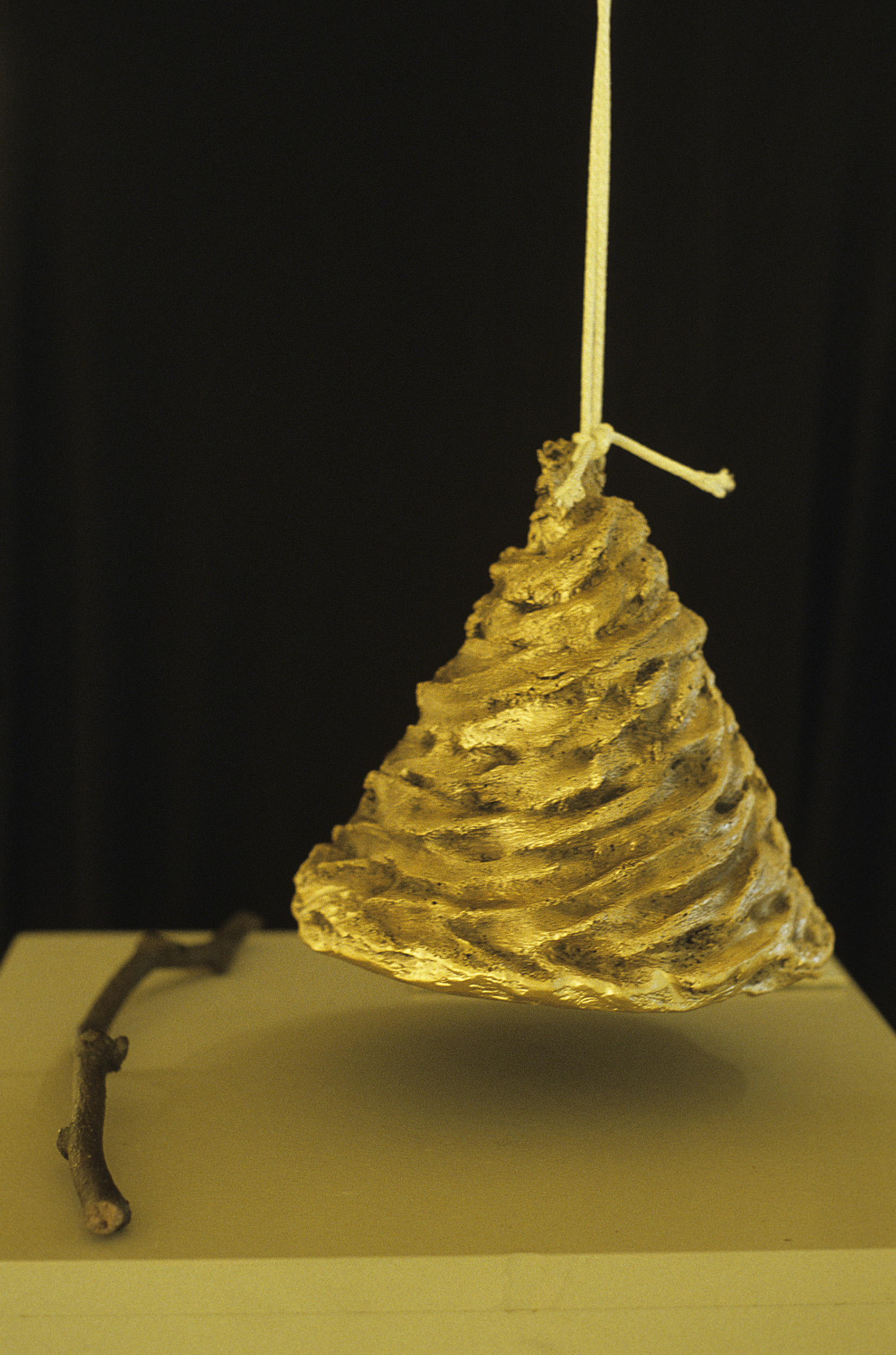
This bronze cast bell is struck with the cast-bronze branch striker. It has a long period of oscillating resonance.
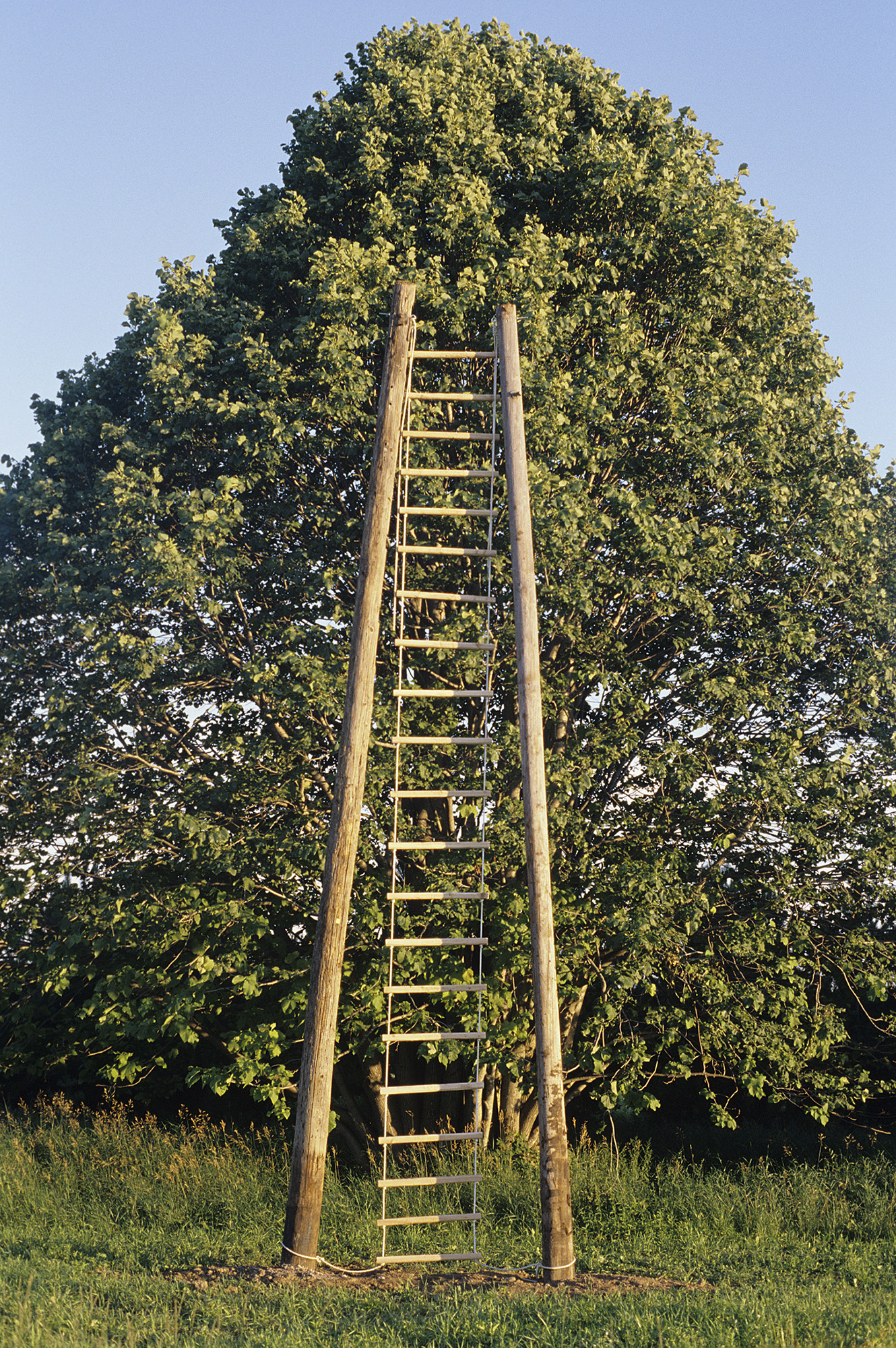
This work was made for Franconia Sculpture Park in Minnesota. It consists of two 30' telephone poles with a rope ladder with carved white-cedar rungs. The rungs are carved with words: concrete nouns describing the surroundings low down ("stone," "aster"); further up, adjectives also referring to nearby qualities ("gritty", "purple"); farther up still, abstract terms of judgement such as "beautiful; at the top, speculative descriptors such as "divine". One could climb the work; as one climbs one can read the words; the higher you go the broader the view, but it can get rather uncomfortable, being so far away from the ground.
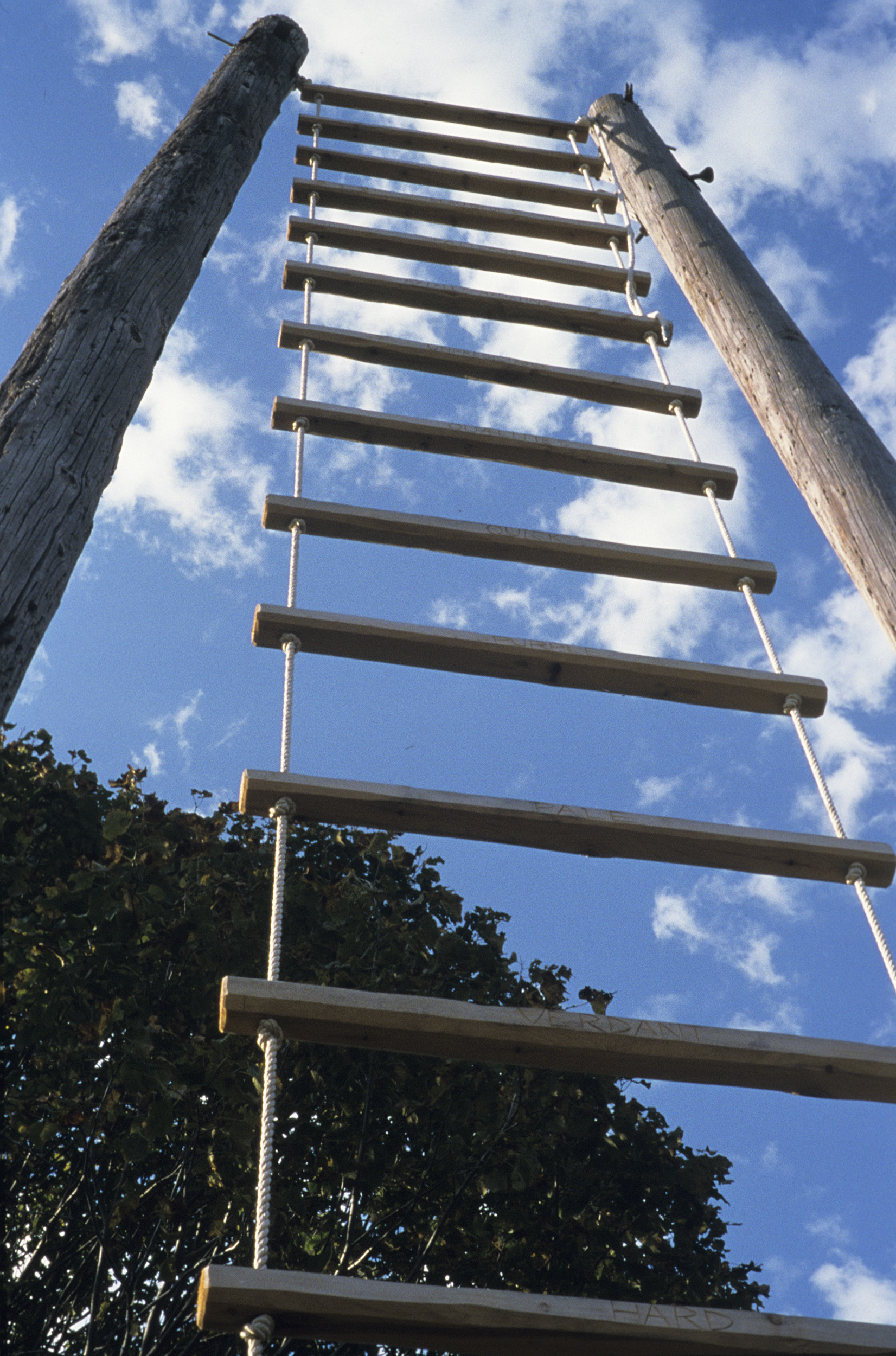
Language, at Franconia Sculpture Park. Note the words on the ladder rungs.
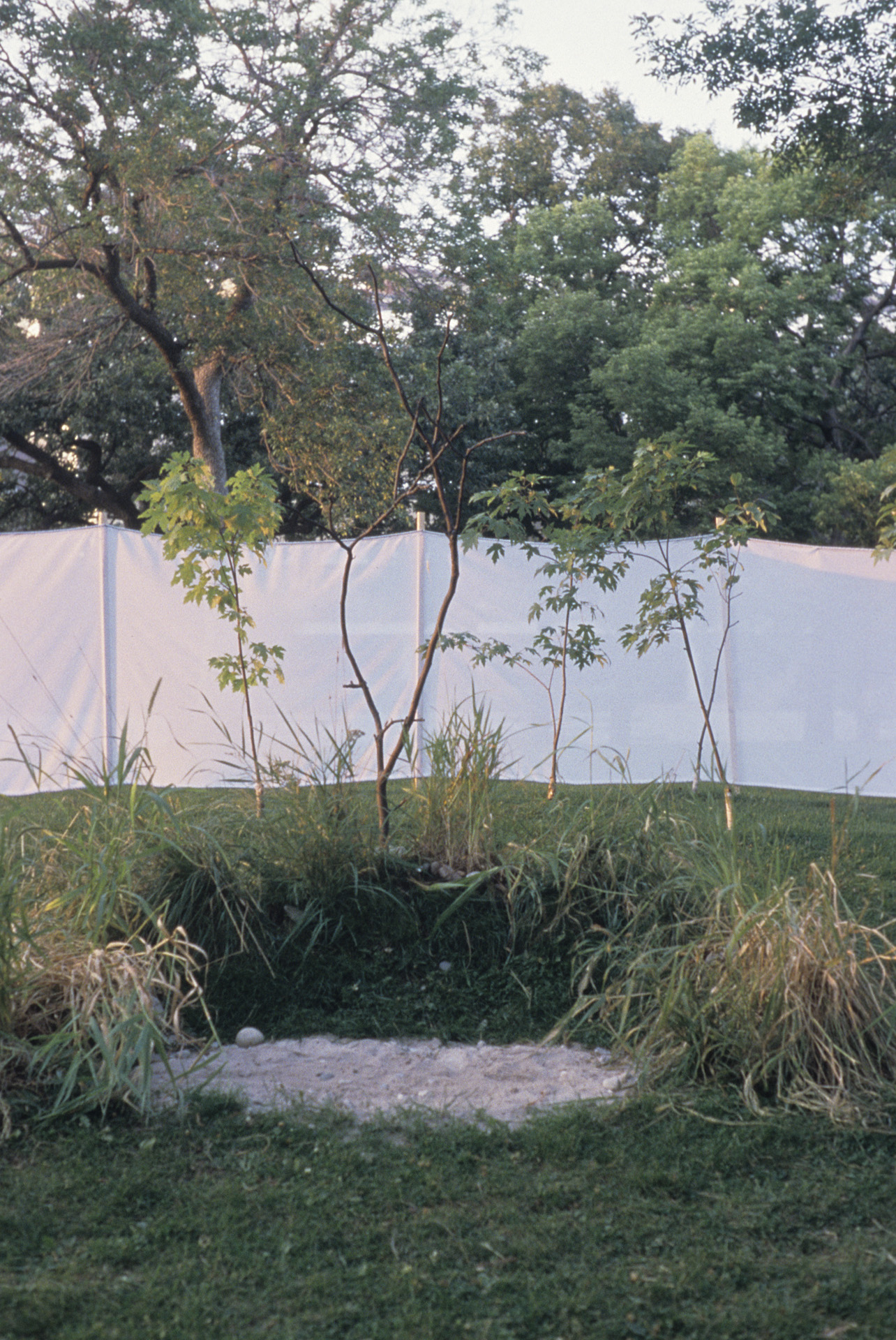
Nest was a temporary AIDS memorial commissioned from me by Forecast Public Artworks for Loring Park in Minneapolis. It consisted of several young saplings planted on a rise in the park, surrounding one cast-bronze sapling. The import of this is simply that most young ones grow up, mature, grow old, but those who get AIDS will not (this was in an earlier time, before effective drug treatment of AIDS). In front of the array of saplings was the nest itself: a berm planted with beach grass and enclosing a sheltering 7' long "beach" of white sand and smooth stones. It was an attempt to imagine a kindly grave, one that we can share.
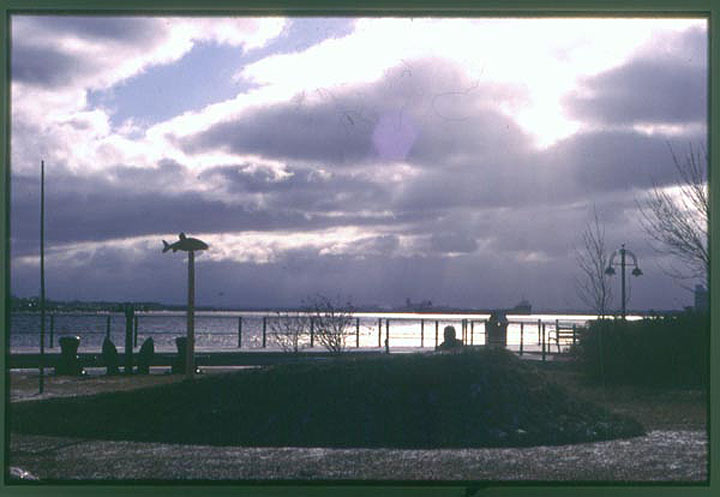
Fish Finder was a temporary artwork built on the site of the current Lake Superior Aquarium. It was a collaboration with Jeffrey Kalstrom. Modeled on similar constructions made of stones (the Pukaskwa Pits) found on beaches along the north shore of the lake, which were built in paleo times, before the current Ojibwe and later European occupants arrived, it serves as a solar calendar. (This is the apparent function of the Pukaskwa Pits.) Two poles stand near the constructed berm. If one sits in the recess built into the back of the berm, the rising sun at the horizon lines up with the central fish pole at the autumn equinox, and with the tall slender pole to the side on the date of the spawn of lake trout on a shallow manmade reef just outside the Duluth Harbor mouth (the view from Fish Finder is down the ship canal outside the harbor). The work preserves an ancient tradition of finding fish based on one's knowledge of the environment where one lives.
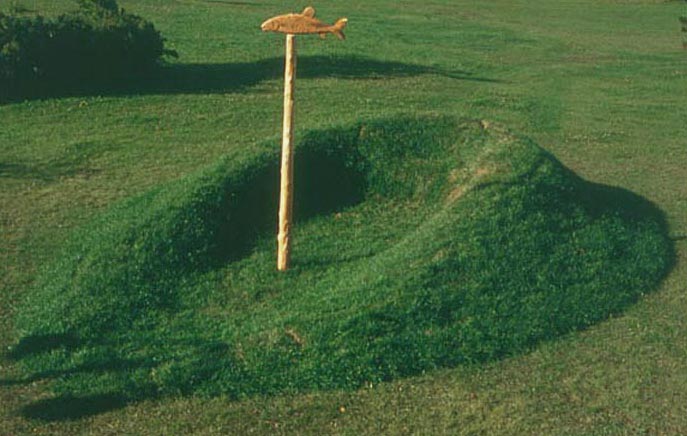
Fish Finder, at the Duluth harbor.
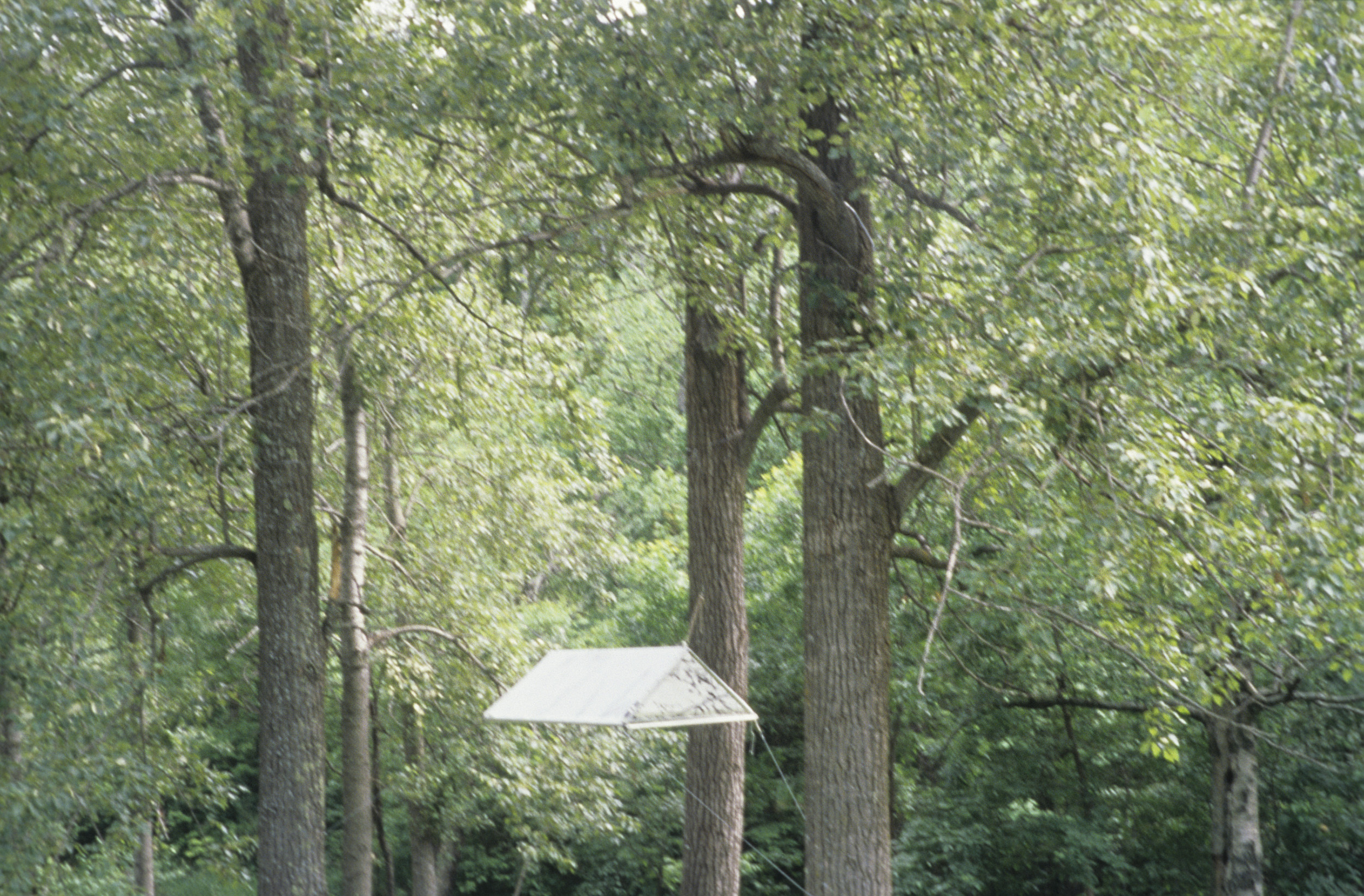
This piece is titled for the time it was painted. Noticing the rapid movement of sun-created shadows across a surface, and interested in ways of noticing time through one's surroundings, I created a tent-like structure of bungee cords and aluminum tube, covered with cotton cloth, and cabled it into a grove of trees in Chester Park in Duluth. Then I painted (quickly) the shadows that fell on the cloth at a particular time of day. The shadow then moved away from the painted lines; the next day it moved up to, matched, and moved away from the painted image.
This work was produced through a Forecast Public Artworks grant.
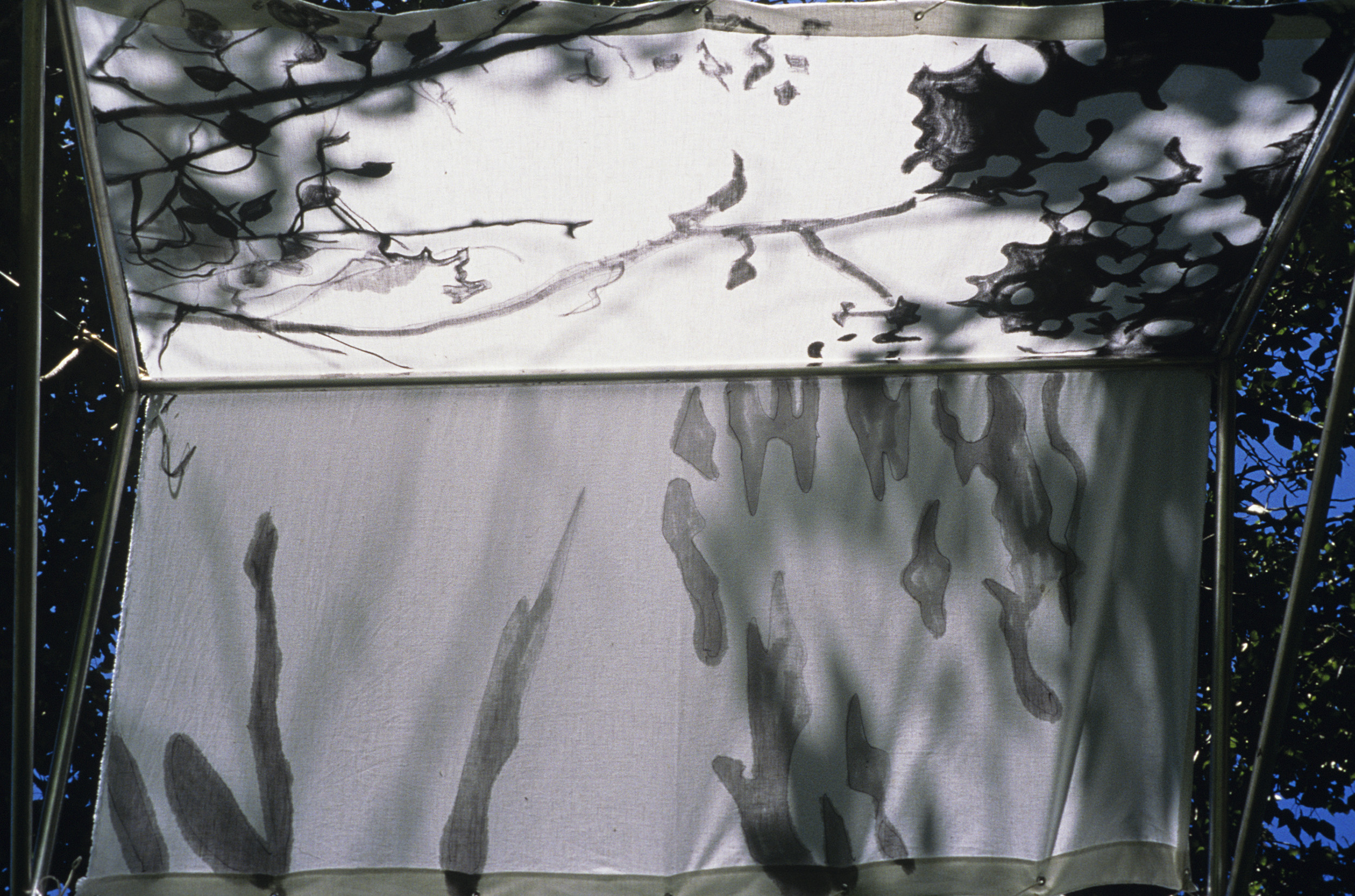
June 23, 3:15pm. This photo was taken about 4 pm. The shadows have shifted.
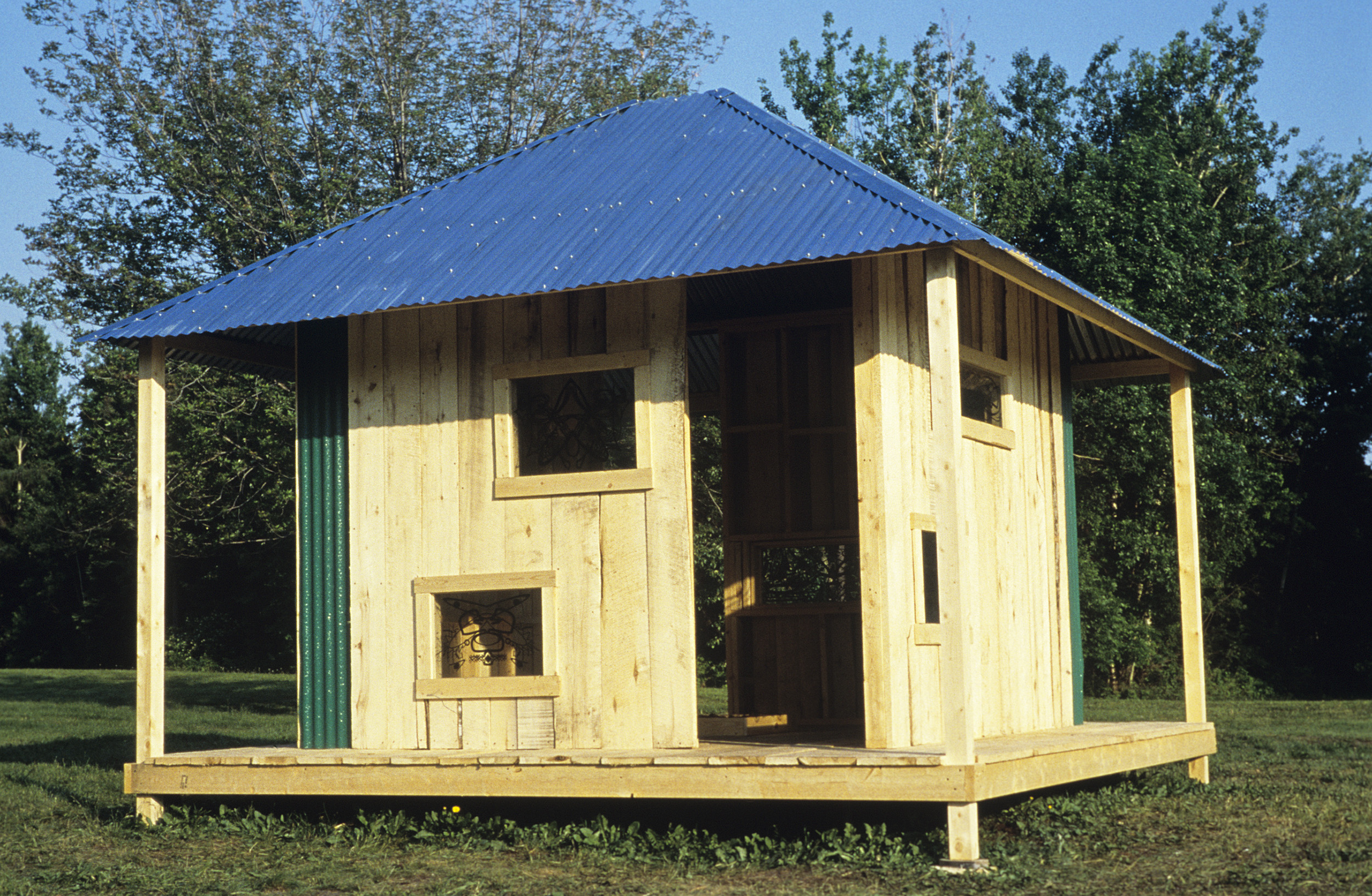
House of Beasts, 14' x 14' x 14', wood, steel, glass, a collaboration with Jeffrey Kalstrom, was a year-long installation in the park opposite the Thunder Bay Gallery in the city of Thunder Bay, Ontario. This was an exchange project between the city of Thunder Bay and the Tweed Museum at UMD. Eventually the House of Beasts Teahouse moved to the Sax Courtyard at the Tweed Museum for another year, when it was dismantled.
The House of Beasts is meant to be a meditative space for thinking, alone of in groups, about the relationship of people with the woods. Built of native green poplar which gradually shrank, admitting stripes of light, and punctuated with windows printed with "beast faces" created by generating abstract symmetrical patterns, the corrugated steel roof had a square "smoke hole" that admitted light and rain and, below it, a mirror embedded in forest duff in the place of the hearth.
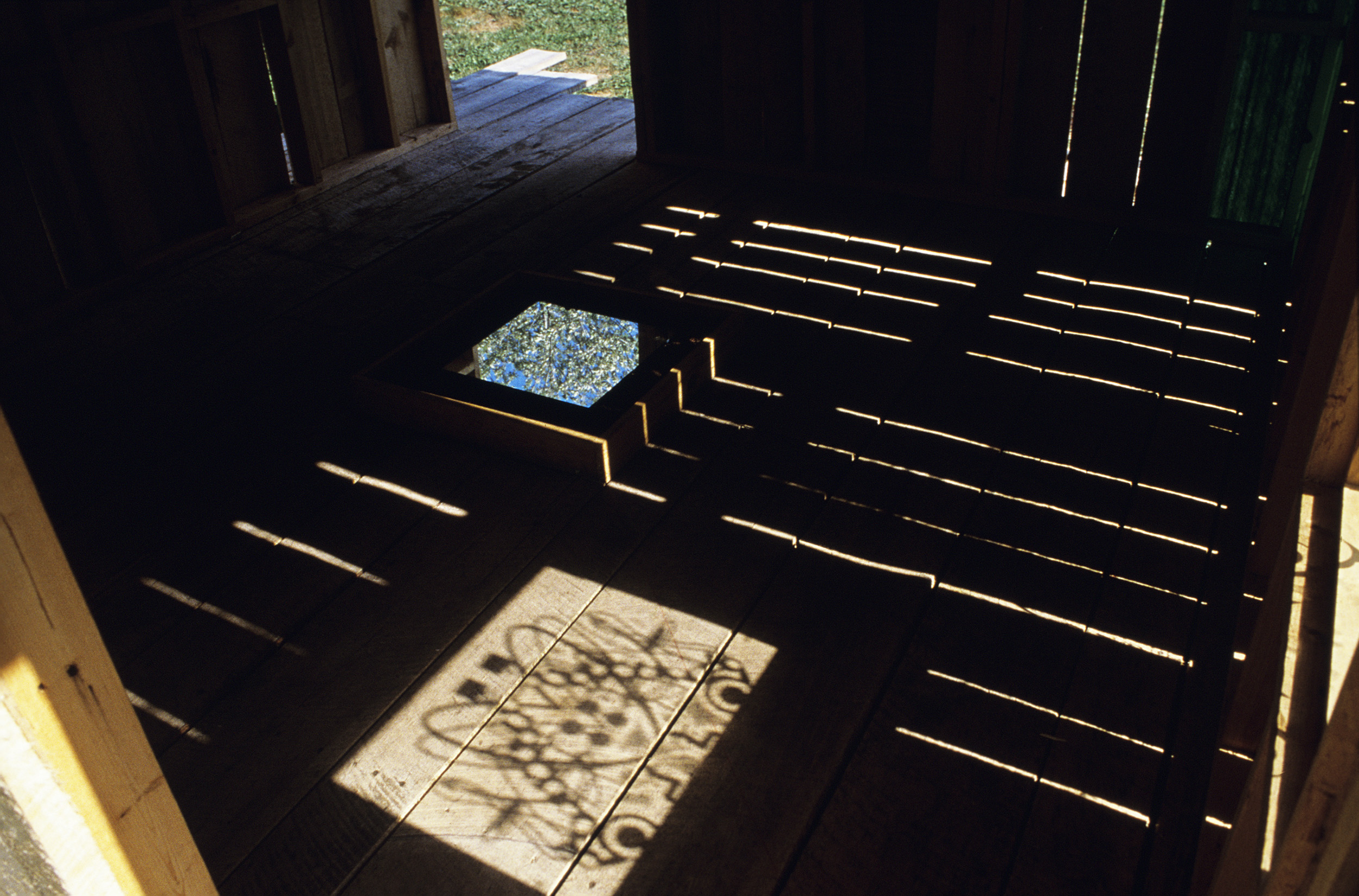
House of Beasts interior, with mirror reflecting the sky hole and the shadow of one of the "bug face" windows.
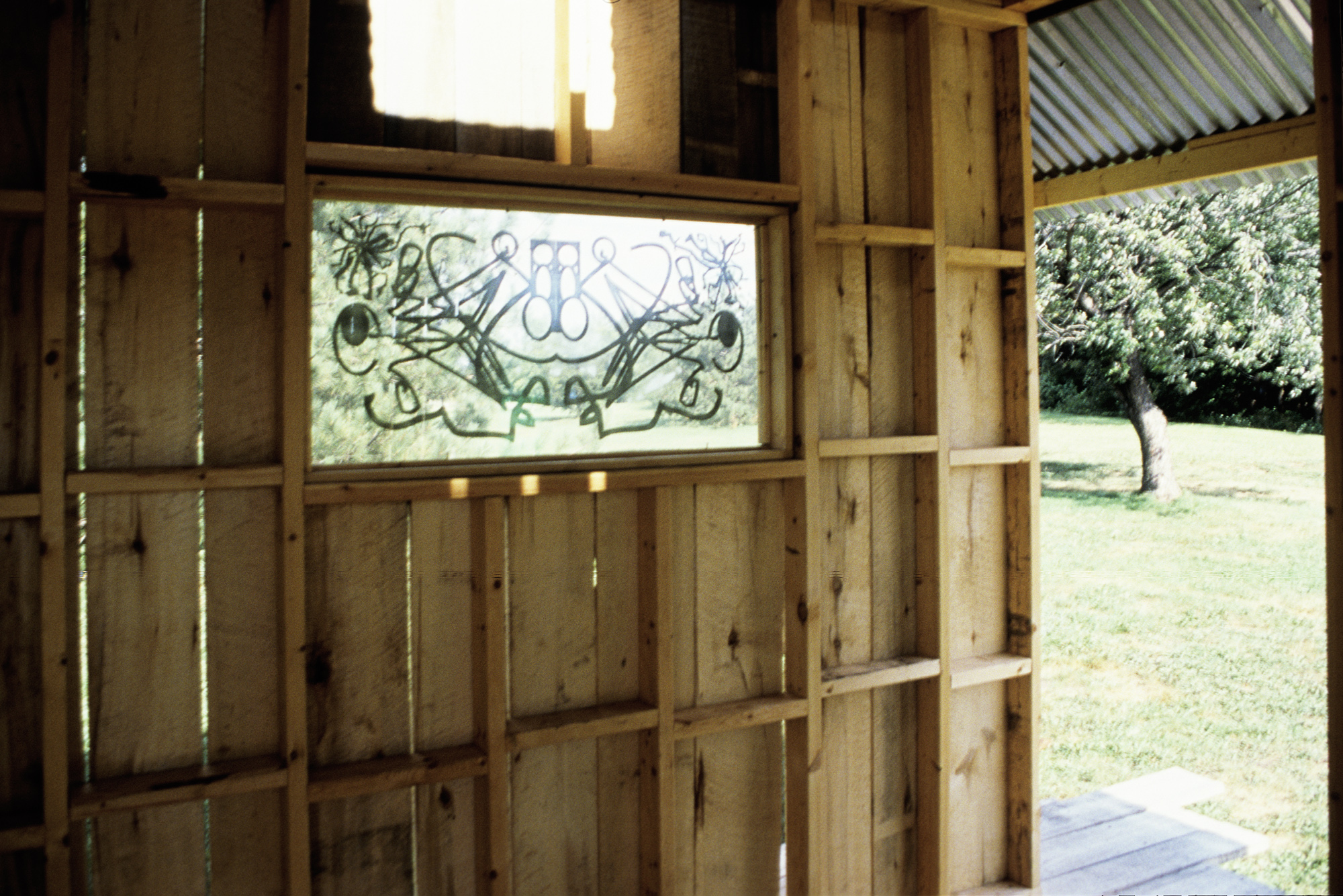
House of Beasts, showing one of the windows and the "verandah" surrounding the building.
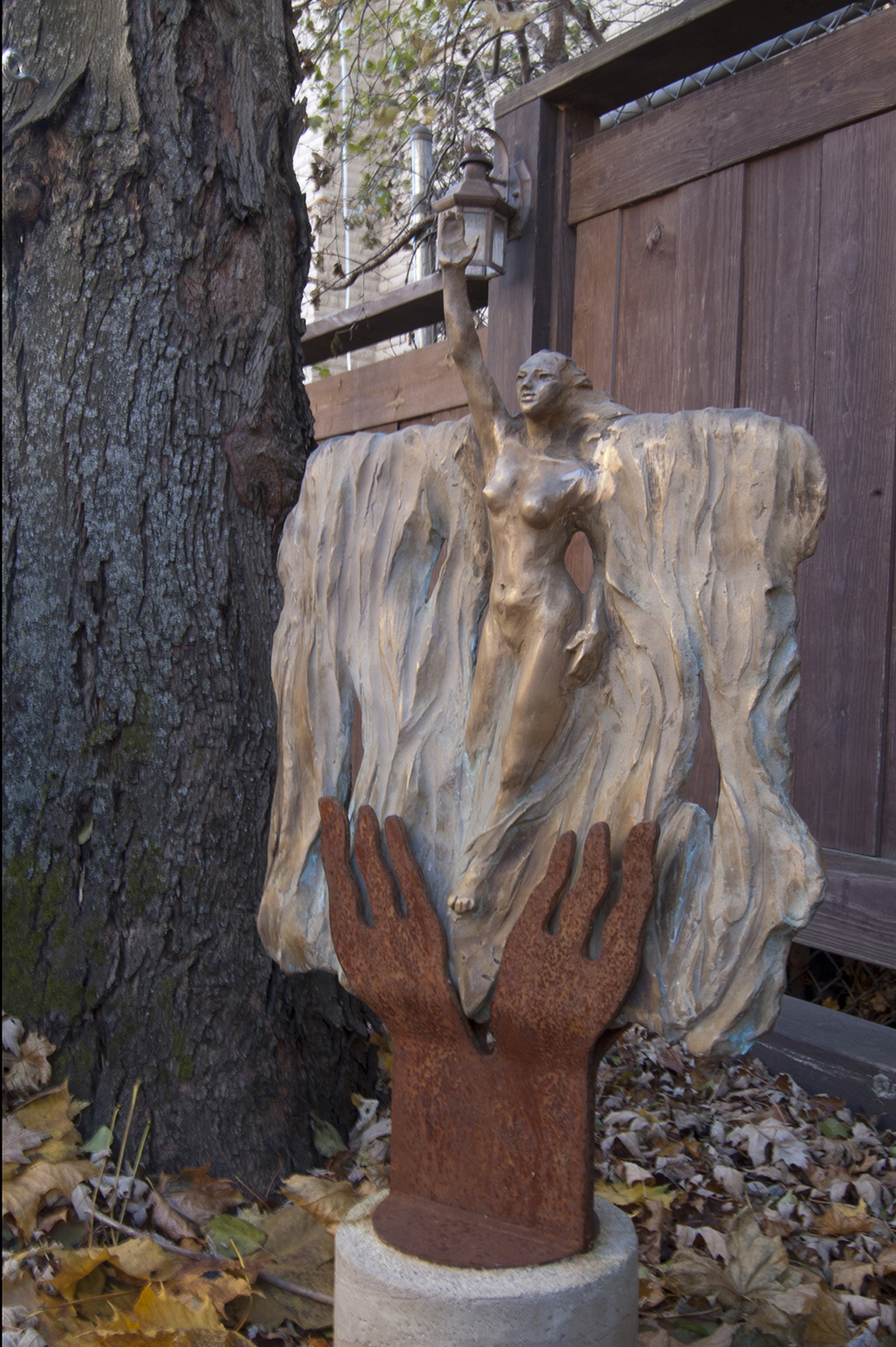
River Swimmer is a bronze maquette for a project for Goldstone Development, which I turned into a garden sculpture. Figure and base overall, 30". Base is concrete and steel.
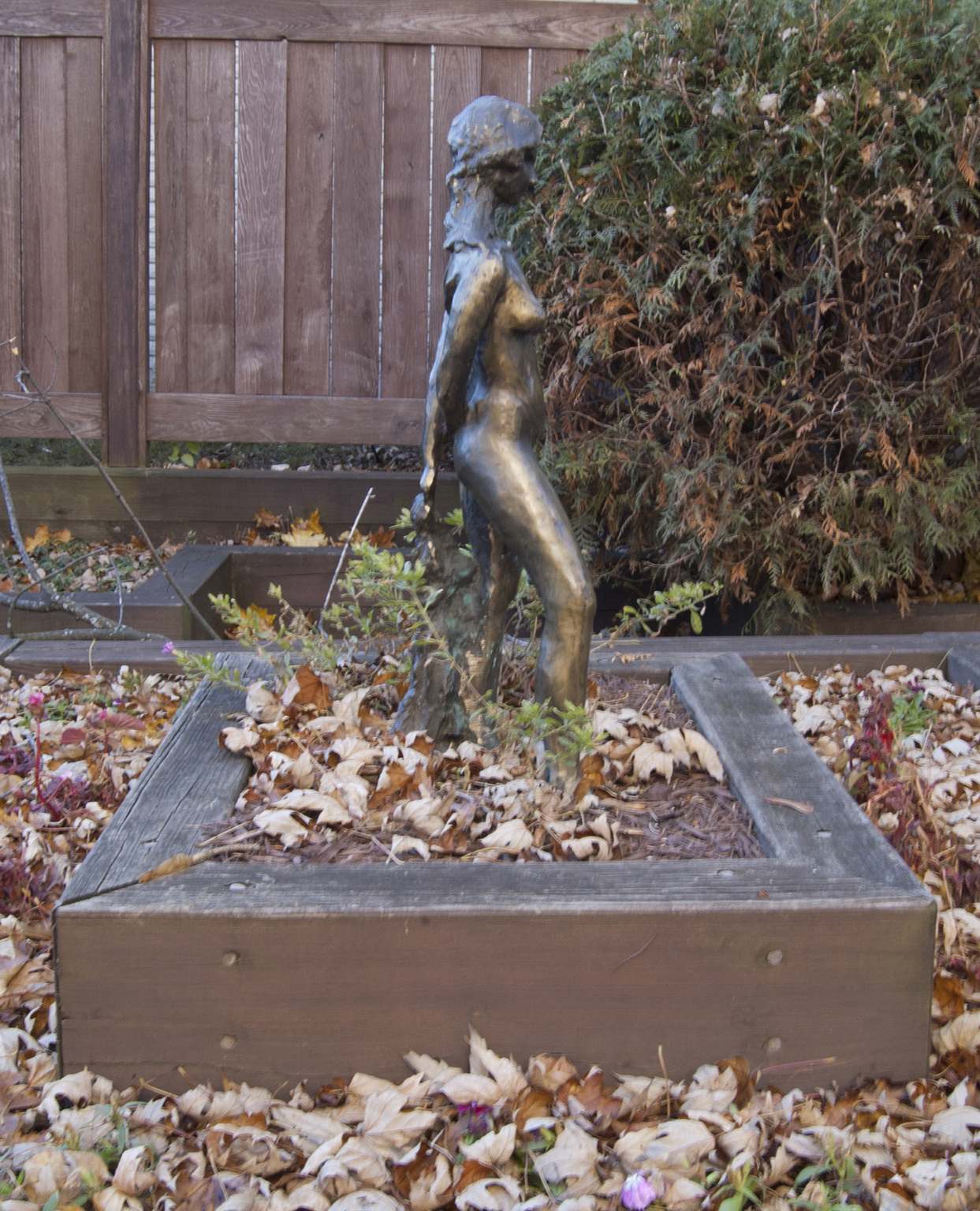
This 32" bronze is an early garden sculpture of mine.















